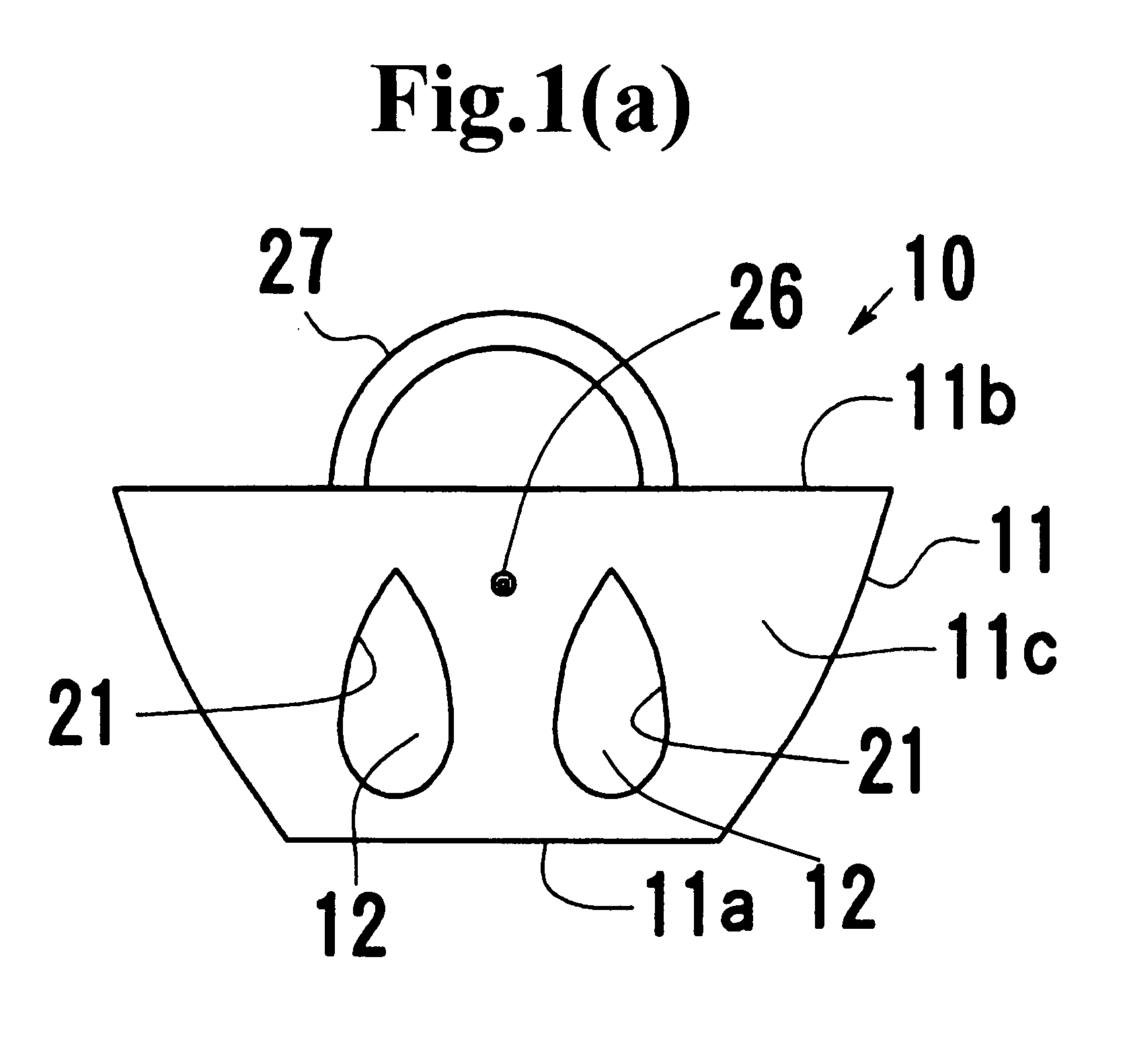Cover for an infant seat
a technology for infant seats and covers, which is applied in the direction of convertible stools, convertible chairs, convertible stools, etc., can solve the problems of infant seats being unsanitary, infants in infant seats being exposed to dirt and germs which adhere to infant seats, and achieves simple structure, easy and surely, the effect of simple structur
- Summary
- Abstract
- Description
- Claims
- Application Information
AI Technical Summary
Benefits of technology
Problems solved by technology
Method used
Image
Examples
Embodiment Construction
[0065]According to the present invention, there is provided a cover for an infant seat comprising:
[0066](1) a flexible, bag-form main body having, in a top portion thereof, an opening for introducing therethrough an infant into the flexible, bag-form main body, and having a leg through-hole for allowing the leg of an infant to extend out of the main body therethrough, and
[0067](2) a flexible flap extending from a portion of the flexible, bag-form main body, which portion is positioned above the leg through-hole, wherein the flexible flap has a free end,
[0068]wherein when the flexible flap is allowed to hang downwardly, the flexible flap is engaged with the flexible, bag-form main body, to thereby close the leg through-hole partly or completely,
[0069]wherein the infant seat has a support means for preventing an infant seated in the seat from falling therefrom, and
[0070]wherein when the flexible, bag-form main body is installed on the infant seat in a manner such that the flexible fla...
PUM
 Login to View More
Login to View More Abstract
Description
Claims
Application Information
 Login to View More
Login to View More - R&D
- Intellectual Property
- Life Sciences
- Materials
- Tech Scout
- Unparalleled Data Quality
- Higher Quality Content
- 60% Fewer Hallucinations
Browse by: Latest US Patents, China's latest patents, Technical Efficacy Thesaurus, Application Domain, Technology Topic, Popular Technical Reports.
© 2025 PatSnap. All rights reserved.Legal|Privacy policy|Modern Slavery Act Transparency Statement|Sitemap|About US| Contact US: help@patsnap.com



